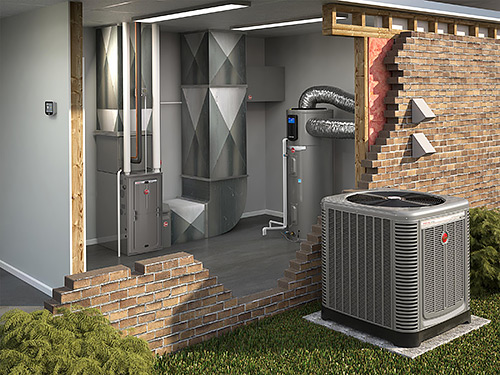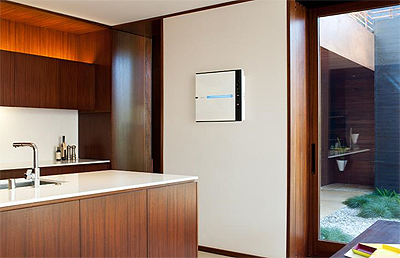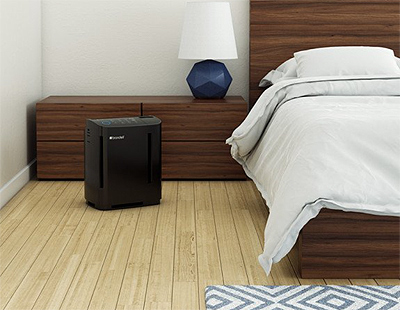
.png)
Search By Square Foot
• Up to 1000 Sq Ft
• 1001 - 1500 Sq Ft
• 1501 - 2000 Sq Ft
• 2001 - 2500 Sq Ft
• 2501 - 3000 Sq Ft
• 3001 - 3500 Sq Ft
• 3501 - 4000 Sq Ft
• 4001 - 4500 Sq Ft
• 4501 - 5000 Sq Ft
• 5001 Sq Ft And Up
Search By Square Foot
• Up to 1000 Sq Ft
• 1001 - 1500 Sq Ft
• 1501 - 2000 Sq Ft
• 2001 - 2500 Sq Ft
• 2501 - 3000 Sq Ft
• 3001 - 3500 Sq Ft
• 3501 - 4000 Sq Ft
• 4001 - 4500 Sq Ft
• 4501 - 5000 Sq Ft
• 5001 Sq Ft And Up
by Tammy Crosby, Chief Operating Officer of The House Designers®
Indoor air quality is a concern for homeowners everywhere. Whether you’re primarily concerned with particulates like dust and pollen, or environmental pollutants like those that off-gas from furniture, there are a variety of solutions available to tackle the challenge. Here are some ways you can invest in healthier air for your home!

HVAC Filters
One of the easiest things you can do to improve indoor air quality is invest in a good filter for your HVAC system. Made to remove larger pollutants like dust, dander, and pollen, this type of whole-house filter catches particles to clean the air going into the furnace. This helps keep the furnace cleaner, of course, but it also means the air it blows into your house is cleaner, too.
The primary purpose of HVAC filters is to protect the furnace from particulates and reduce how often it needs to be professionally serviced. Keeping the furnace clean helps it run more efficiently, but because filters increase resistance as air is pulled through them, they can actually reduce efficiency. That’s why it’s so important to use the proper filter to avoid straining your system.
A professional can select the right filter for your home, but you can also discuss your needs with your builder early on to make sure you install an HVAC system designed to handle a higher level of filtration. Today’s HVAC filters are better than they used to be—they use more advanced materials and are designed with deeper pleating to catch more particles with less resistance—so you might be surprised by how much of a difference they make!

Room Air Purifiers
Made to be placed exactly where you want to clean the air, air purifiers offer a higher level of filtration. Because they’re standalone systems, they can be built to remove extremely small particles like bacteria, mold spores, and smoke, and even offer specialized filtration to capture chemicals like volatile organic compounds (VOCs) and those associated with odors. They do this with a multi-stage approach that pulls air through layers of filters that remove progressively smaller pollutants. Air purifiers that capture 99.97% of particles 0.3 microns in diameter meet the high-efficiency particulate arrestance (HEPA) standard you’ve probably heard of!
Air purifiers come rated for rooms of varying sizes, and you should think of them as a zoned system. It’s important to remember that, even if a purifier can cover a larger space than where you put it, it can’t effectively exchange air with a room next door. So, invest wisely! Most people prioritize putting purifiers in bedrooms because they help so much with getting a good night’s rest. Save the bigger models for your living spaces, especially if you have an open-concept floor plan with a lot of air volume to exchange.

Purifiers with Perks
It's a wide world of air purifiers these days. Not only do they remove more pollutants than they used to, but they come in all sorts of shapes and sizes and with a variety of functions. You could get overwhelmed trying to choose the perfect one! Make it easier on yourself by putting together a list of must-have features. Here are some things to consider:
Once you’ve experienced cleaner indoor air, you’ll wonder how you never noticed that poor indoor air quality was affecting you before! Take the time to do some research on HVAC systems and purifiers to optimize the air you breathe. Most of us spend the majority of our lives inside, so it’s important not to overlook this key part of our health and comfort!